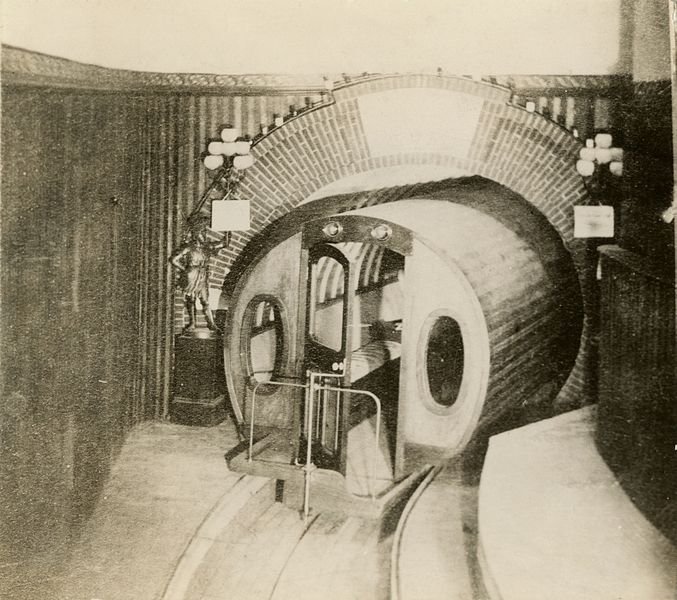8. Tweed was an Early Supporter of Subterranean, People-moving Pneumatic Tubes
 Alfred Ely Beach’s pneumatic tube subway in NYC that ran on Broadway between Warren and Murray Streets. Photo in public domain from Wikimedia Commons.
Alfred Ely Beach’s pneumatic tube subway in NYC that ran on Broadway between Warren and Murray Streets. Photo in public domain from Wikimedia Commons.
A precursor to the subway, the Tweed operation supported the construction of underground pathways that used steam power to transport horse carriages as fast as 50 mph. When Tweed and his Ring went down, the project was considered corrupt by association. In a desperate effort to re-brand the project, its supporters argued that Tweed had been the one to hold it back. It was all for naught, as the Panic of 1873 wiped out financial markets across the country and dried up investment in the tubes. New York City would have to wait three decades for a subway, as Tweed shut down competitor Alfred Ely Beach’s pneumatic tube subway that ran on Broadway between Warren and Murray Streets
Pneumatic tubes did come into favor to transport smaller items – evidenced in the well-developed mail delivery system under New York City and is present in other institutional and corporate locations.





